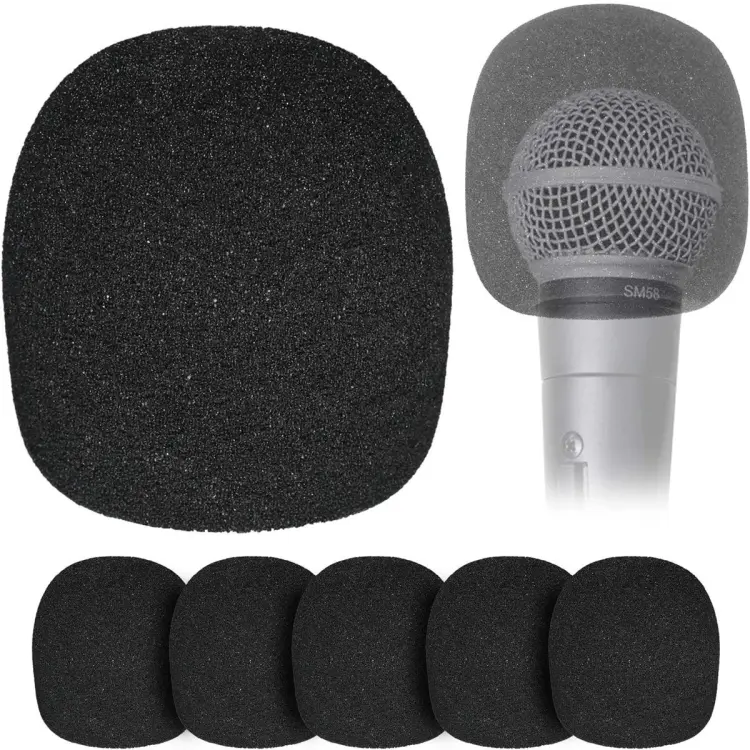General
Mic Covers: A Must-Have Accessory for Clean and Crisp Audio

Enhancing Audio Quality
In the world of audio recording and broadcasting, achieving clean and crisp sound is essential. Whether you’re a professional podcaster, musician, or content creator, the quality of your audio can make or break your content. While investing in high-quality microphones is crucial, there’s another accessory that often goes overlooked but can significantly impact audio quality: mic covers.
The Importance of Mic Covers
Mic covers, also known as windshields or pop filters, serve multiple purposes in audio recording:
- Wind Noise Reduction: When recording outdoors or in environments with airflow, wind noise can be a significant issue. Mic cover help mitigate this by acting as a barrier against wind, preventing it from interfering with the microphone’s sensitive diaphragm. This is particularly important for outdoor interviews, field recording, or outdoor performances.
- Plosive Reduction: Plosives are the strong bursts of air that occur when pronouncing certain consonants like “P” and “B.” Without a mic cover, these plosives can cause unwanted pops and distortions in the audio. Mic covers, especially pop filters, help diffuse these bursts of air, resulting in smoother and more pleasant audio.
- Spit and Moisture Protection: During intense vocal performances or extended recording sessions, saliva and moisture from the mouth can accumulate on the microphone. Over time, this buildup can affect the microphone’s performance and durability. Mic covers act as a protective barrier, preventing saliva and moisture from reaching the microphone’s sensitive components.
Types of Mic Covers
Mic covers come in various shapes, sizes, and materials to suit different recording needs:
- Foam Windscreens: These are simple foam covers that slide over the microphone’s head. They are lightweight, affordable, and effective at reducing wind noise and plosives. Foam windscreens are commonly used in outdoor recording scenarios and are ideal for handheld microphones.
- Pop Filters: Pop filters consist of a thin mesh or nylon screen mounted on a frame that attaches to a microphone stand or boom arm. They are specifically designed to reduce plosives while allowing sound to pass through unhindered. Pop filters are widely used in studio environments for vocal recording, podcasting, and voiceover work.
- Furry Windscreens: Also known as dead cats or blimps, furry windscreens are larger covers made of synthetic fur or foam. They are highly effective at reducing wind noise and are commonly used in outdoor recording situations, such as field interviews and nature recordings. Furry windscreens offer superior wind protection compared to foam windscreens but are bulkier and more expensive.
Choosing the Right Mic Cover
When selecting a mic cover, consider the following factors:
- Mic Type: Different microphones require different types of covers. For example, handheld microphones benefit from foam windscreens, while studio condenser microphones typically use pop filters.
- Recording Environment: Assess the recording environment to determine the level of wind noise and plosives you’re likely to encounter. For outdoor recording, a furry windscreen provides optimal wind protection, while a pop filter is more suitable for indoor vocal recording.
- Budget and Preferences: Mic covers are available at various price points, so consider your budget and preferences when making a purchase. While foam windscreens are affordable and versatile, pop filters and furry windscreens offer superior performance but at a higher cost.
Conclusion
In the quest for clean and crisp audio, mic covers are indispensable accessories that can make a significant difference in recording quality. Whether you’re recording vocals in a studio, conducting interviews outdoors, or capturing ambient sounds in the field, the right mic cover can help reduce wind noise, plosives, and moisture, resulting in professional-quality audio recordings. By understanding the importance of mic covers and choosing the right type for your recording needs, you can elevate the quality of your audio content and captivate your audience with pristine sound.




















